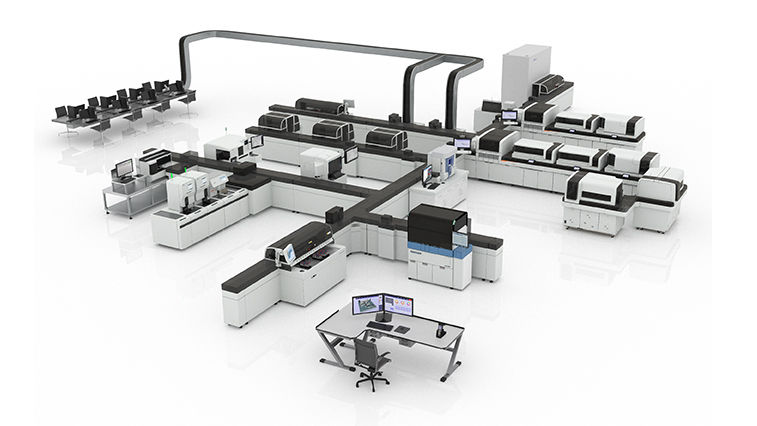Mobile X-Ray
- Ameco

- Jul 9, 2020
- 3 min read
Updated: Jan 19, 2021
125 years of X-ray: Already early on, X-ray systems became mobile. Read how today, X-ray and computed tomography comes right to the patient’s bedside.
It is said that the greatest happiness on earth is sitting in the saddle of a horse – and, believe it or not, the success of an X-ray examination also once depended on our four-legged friends. Horses played a vital role in the early days of mobile X-ray, as they could not only pull the carts on which the X-ray equipment was transported but also provide the electricity needed to operate it: In 1907, Siemens & Halske launched a dynamo that was driven by two horses, allowing examinations to be performed even in locations without access to a power grid.
For a long time, mobile X-ray devices were relatively unwieldy and were transported in heavy wooden boxes. It was not until 1919, when the American Harry F. Waite registered a patent in the U.S., that the foundation stone for truly compact X-ray apparatus was laid. Waite’s idea was to mount the high-voltage transformer and X-ray tube together inside a single radiation protection housing to create what is known as a single tank generator.
This was the principle behind one of the most successful products in the history of Siemens Healthineers: the Siemens X-ray Sphere. Weighing just 12 kilograms and with a diameter of 22 centimeters, the device benefited from an extremely compact and robust construction, as demonstrated by the peculiar story of two X-ray Spheres. The spheres belonged to the Swedish Red Cross and were being used in Africa when they fell victim to looters, who threw them away as they fled. As a result, the two spheres were left lying in marshland for weeks during the rainy season before being recovered and ultimately finding their way back to their original owners. The spheres were dirty and dented and “didn’t look as good as they should for a piece of apparatus in a physician’s examination room,” but a thorough inspection by Siemens-Reiniger-Werke revealed that they were still in full working order and safe to use! The X-ray Sphere quickly became a worldwide bestseller. From its launch in 1934 to the end of 1950, sales totaled 23,309 units – and many thousands more had been purchased by the time production came to an end in 1974.
In the mid-20thcentury, X-ray technology plays a vital role in combating tuberculosis. Although Robert Koch (1843–1910) identified the cause of the disease in 1882, the process for diagnosing tuberculosis was for a long time limited to percussing patients’ chests and listening to them with a stethoscope. From the 1920s on, X-ray technology was the most important diagnostic tool for detecting tuberculosis. Yet X-rays were too expensive for large demographic groups that were vital for effectively stemming the spread of the disease. As technology advanced, a new method known as photofluorography became established at the end of the 1930s. This technique used a small-format camera to photograph the image on the fluorescent screen during the examination. By making the process cheaper and faster, it allowed a large number of people to be examined in a short time.
The first serviceable photofluorography unit was developed by the physician Manuel de Abreu in collaboration with the Brazilian subsidiary of Siemens-Reiniger-Werke, Casa Lohner in Rio de Janeiro. In the context of mass screening programs, it became increasingly common to install X-ray equipment in buses. This allowed the examination room to be taken directly to workplaces or schools, for example, and also made it easier to examine large demographic groups.

Of course, there was still a need for mobile X-ray equipment that physicians could use in the operating room or at the bedside, for example. When Siemens launched the Mobilett in 1982, the device couldn’t compete with the weight of small devices such as the X-ray Sphere, but it was still classed as a lightweight at 230 kilograms: Weighing over 100 kilograms less than similar models from competitors, it was easy to move around while offering all the power of stationary devices. The Mobilett and Polymobil, which was also introduced in the 1980s, marked the beginning of two product lines that still appear in the portfolio of Siemens Healthineers today.
Nowadays, even CT scanners – which are usually extremely heavy – are becoming mobile: In December 2019, Siemens Healthineers presented its new mobile SOMATOM On.site1 head scanner at the world’s preeminent radiology conference, the RSNA in Chicago. SOMATOM On.site allows examinations of patients in intensive care to be carried out directly at the bedside. This removes the need for the time- and labor-intensive process of transporting patients from the intensive care unit (ICU) to radiology.
Mobile X-ray technology has come a long way since its early days, when power was generated by horses, to the mobile cranial CT scanners of today, which can be wheeled to a patient’s bedside in the ICU – and the fascinating story of the technology’s development is certainly not over yet.






Comments